Clean Water Healthy Habitat
Learn more about Clean Water Healthy Habitat, a King County initiative to protect water quality and habitat. It will benefit the people, salmon, and orcas that call our region home.
Achieving better results sooner for people, salmon, and orcas
Over the next 10 years, we are investing more than $9 billion to protect water quality and habitat throughout King County. This will benefit the people, salmon, and orcas that call our region home.
Clean Water Healthy Habitat is a commitment by King County Executive Dow Constantine to ensure that each investment produces the best outcomes, as quickly as possible.
It’s time for a new approach
Change can be difficult, especially when historic practices have produced positive results in the past.
Yet the current approach is clearly not working. Despite decades of outstanding performance by our staff and partners:
- Native salmon runs continue to decline.
- Southern resident orcas are on the brink of extinction.
- Pollution still disproportionately impacts BIPOC communities.
The decisions we make over the next few years will guide our action for decades. And they will impact the water quality and habitat of our region for generations to come.
How will we invest the funds?
About half of the $9 billion will be put toward maintaining our existing infrastructure. These systems treat more than 66 billion gallons of wastewater and stormwater each year.
Before we decide how to invest the remaining amount, we're working with partners to create a resilient system. One that is prepared for climate impacts and population growth. These partners include:
- Tribes
- Regulatory agencies
- Cities
- Environmental advocates
- Community-based organizations
A nimble approach to respond to new threats to water quality
In the traditional model, water quality investments aren’t determined by the outcomes they’ll produce. Instead, they’re largely determined by the designated revenue source and what it will take to comply with regulations.
While we will continue to comply with all regulations, if there is a new approach that produces better results faster, we want to work with our partners to create a regulatory framework that requires us to meet the new standard. This will create a nimble approach to protecting water quality, one that provides flexibility to meet new and emerging threats that will occur as the result of climate change and population growth.
Outcomes
There are 6 clearly defined outcomes of the Clean Water Healthy Habitat initiative. These are:
Healthy forests and more green spaces
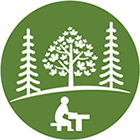
Cleaner, controlled stormwater runoff
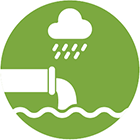
Reduced toxics and fecal pathogens
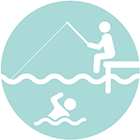
Functioning river floodplains
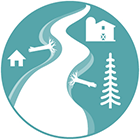
Better fish habitat
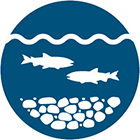
Resilient marine shorelines

In addition to these outcomes, we also seek to achieve:
- A resilient approach to protecting water quality. One that prepares the region for climate impacts and population growth.
- A regulatory framework developed with partners that builds on past successes, ensures accountability, encourages innovation, and uses the latest science.
- A unified effort that crosses jurisdictional boundaries and achieves measurable results at the watershed level.
- Aligned work across King County government to advance our defined goals.
- A more just, equitable community where each action we take helps dismantle persistent systemic racism.
Water Quality Benefit Evaluation Toolkit
Scientists and experts throughout the central Puget Sound region continue to improve our understanding of what the greatest threats are now to water quality and habitat. This growing body of science must help guide our actions.
We’ve worked with scientists from universities, regulatory agencies, and cities to develop a toolkit, known as the Water Quality Benefit Evaluation. This tool compares potential investments and costs by how well they reduce pollutants to achieve specific goals, such as:
- Edible fish
- Shellfish harvesting
- More chinook salmon
- More fish for southern resident orcas
The toolkit is available to decision-makers throughout the region so we can all base our investments the latest science.

 Translate
Translate